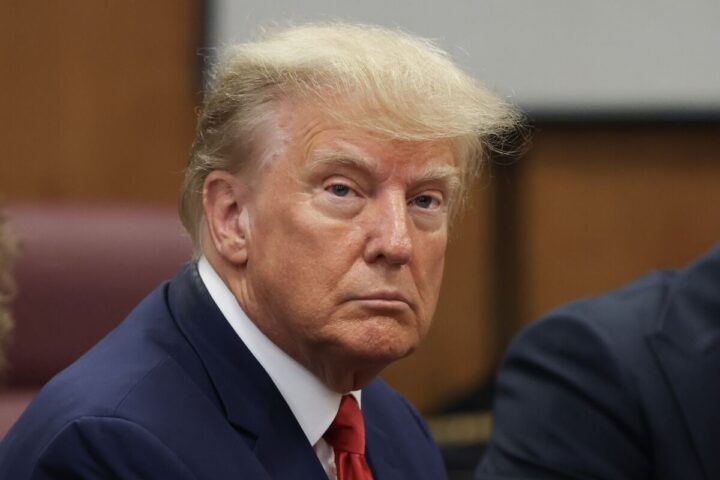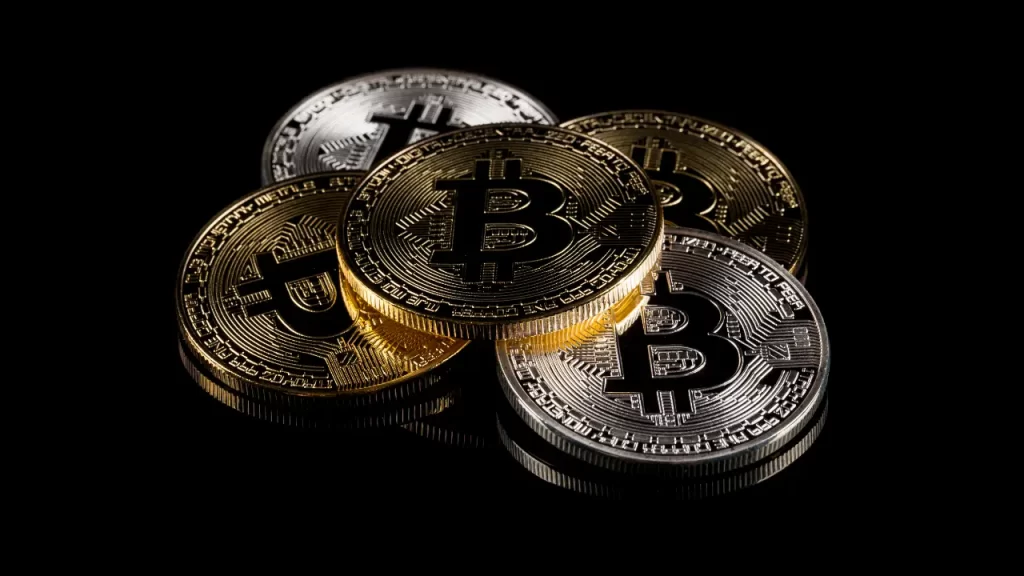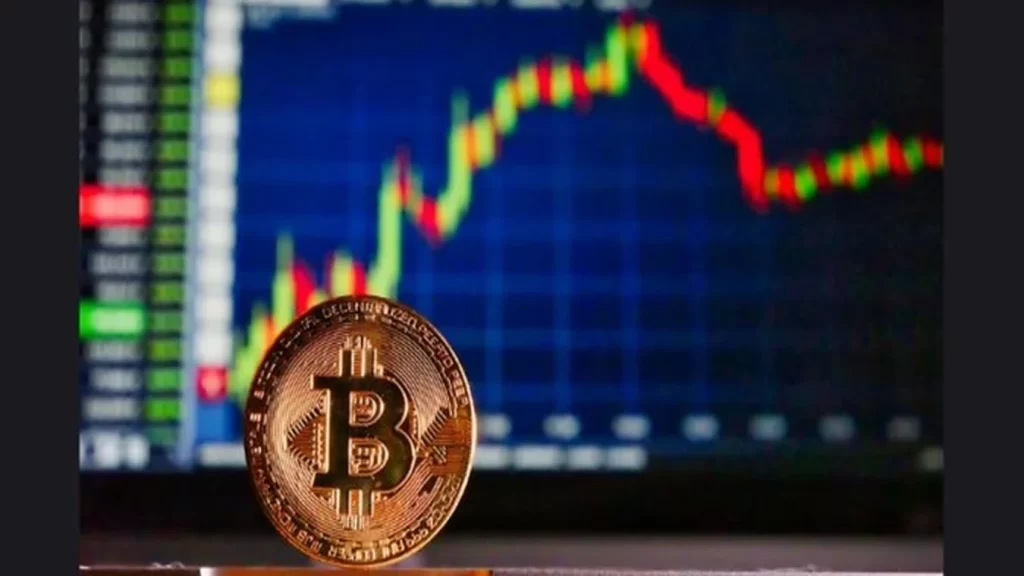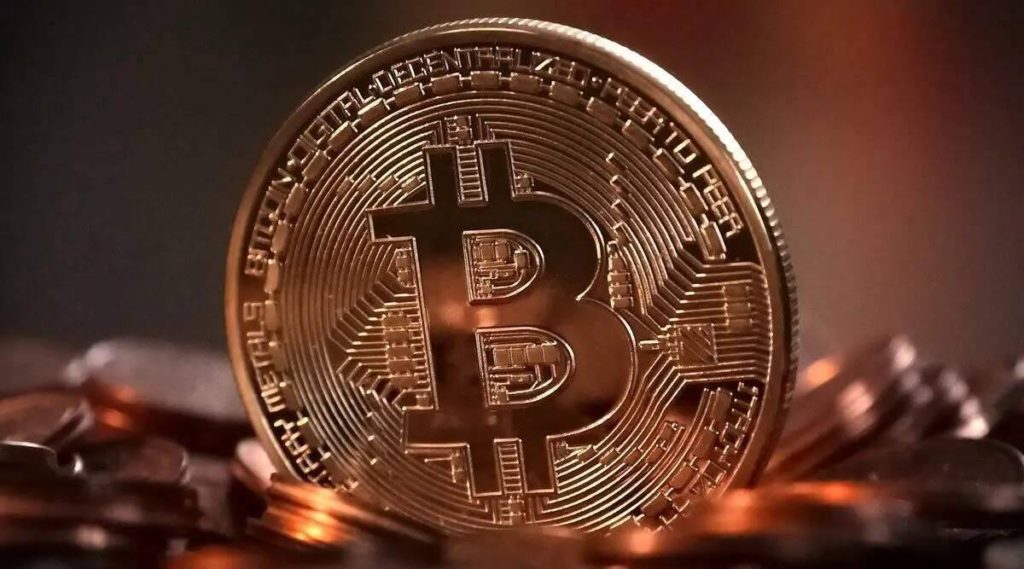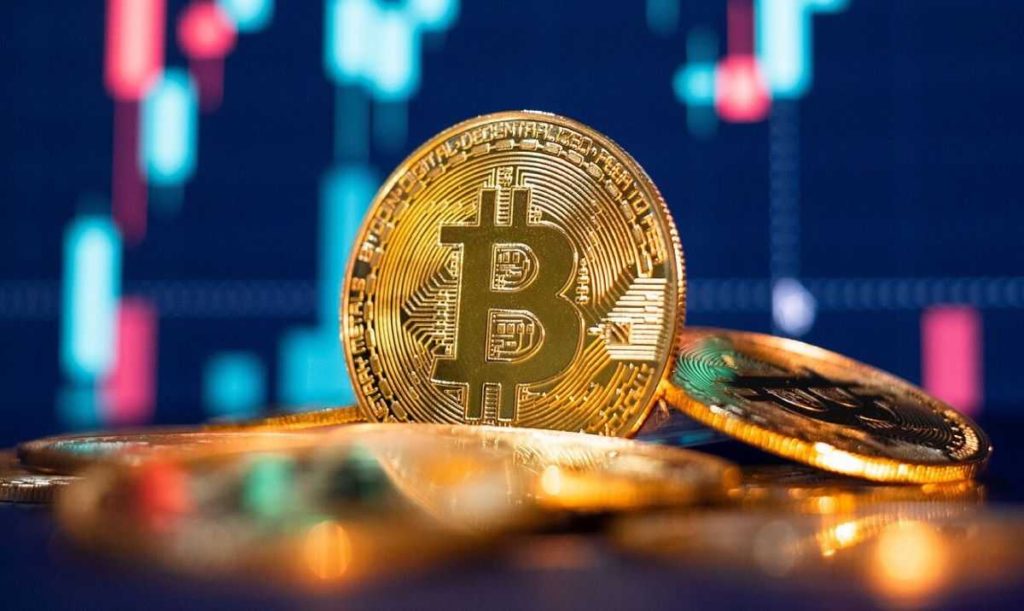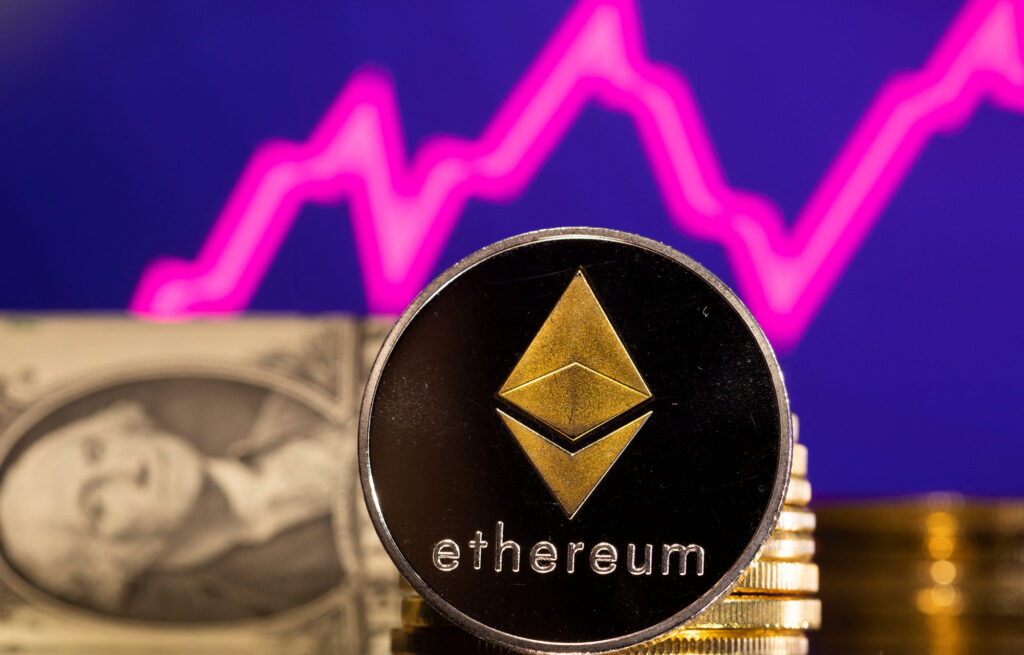On December 21, amidst Bitcoin’s struggle to breach the $45,000 resistance level, large-cap altcoins like Solana and Avalanche emerged as frontrunners in the crypto market.
Bitcoin had faced resistance at $45,000 since its initial surge on December 5, resulting in a slight pullback in its market dominance from 53.95% to 53.17%.
Meanwhile, altcoins witnessed a surge in market dominance (TOTAL2).
Technical analysts often interpret a drop in Bitcoin dominance combined with BTC’s sideways trading as a potential indicator for an altcoin breakout.
Furthermore, market sentiment is influenced by the interplay between the U.S. Dollar Index (DXY) and Bitcoin’s price.
Presently, the DXY has declined by 1.56% in the month, while Bitcoin has gained 16.18% in the same period.
Many traders attribute the DXY’s reversal to comments from Federal Reserve Chair Jerome Powell and FOMC minutes hinting at possible interest rate cuts in 2024.
With the expectation of a spot Bitcoin ETF approval in Q1 2024 and the belief that the Fed’s interest rate hikes have ended, the crypto market sentiment leans toward euphoria.
READ MORE; Singapore Court Freezes Over $1 Billion in Assets of Crypto Hedge Fund Founders
Solana and Avalanche have notably surged in price during this period, with SOL becoming the fourth-largest cryptocurrency by market capitalization, surpassing XRP. SOL’s rise can be attributed to several factors, including improvements in the Solana network’s user experience, particularly for token and NFT launches.
Solana’s focus on mobile accessibility and low transaction costs has attracted users prioritizing ease of use over decentralization, making it a strong competitor against Ethereum.
SOL’s recent rally is further fueled by the excitement surrounding airdrops, the listing of the SPL token JITO on major exchanges, and the subsequent success it achieved, with a market capitalization exceeding $300 million shortly after launch.
Additionally, SOL’s growth is supported by the increasing adoption of decentralized applications (DApps) on the Solana network.
Over three weeks, the total value locked (TVL) in Solana surged from $654 million to $1.28 billion, marking a remarkable 96% increase.
Similar trends can be observed in the Avalanche ecosystem, where an influx of DApp users, various DeFi protocol incentives, and persistent rumors of airdrops have led to increased inflows, daily active users, and an upward trajectory in the price of AVAX.
These developments highlight the growing prominence of Solana and Avalanche as they make strides in the competitive cryptocurrency market.
In the midst of a burgeoning crypto marketing showdown, the spotlight has recently fallen on Bitcoin exchange-traded fund (ETF) issuers who have unleashed a flurry of crypto advertisements, marking a total of three within a mere two days.
The first salvo was fired by Bitwise on December 18th when they unveiled their Bitcoin ETF advertisement.
Featuring none other than the renowned actor Jonathan Goldsmith, famous for his portrayal of the “Most Interesting Man in the World” in a Dos Equis beer campaign, this ad sought to capture the audience’s attention.
Not to be outdone, Hashdex joined the fray on December 20th with their own crypto advertisement.
Their offering featured a dumper truck emblazoned with the bold captions, “Stocks aren’t crypto, fixed income isn’t crypto, precious metals? nope, not crypto either,” before highlighting their own firm.
Bitwise, determined to maintain the momentum, swiftly responded on the same day with another short ad featuring Goldsmith.
In character, he humorously remarked, “Thought you would like to know, Satoshi sends his regards,” while continuing to promote Bitcoin.
Despite the spirited competition, the prevailing sentiment on social media was that Bitwise’s advertising campaign had emerged victorious.
READ MORE: Improbable’s Sale of The Multiplayer Group to Keywords Studios Marks Metaverse Industry Milestone
This marketing blitz by asset managers is particularly noteworthy as it reflects a high level of confidence in a financial product still awaiting regulatory approval.
Currently, there are 13 pending spot Bitcoin ETFs, with analysts estimating a 90% likelihood of approval by the SEC by January 10th.
Samson Mow, CEO of JAN3 and a Bitcoin pioneer, weighed in on the significance of these marketing campaigns for Bitcoin ETFs.
Mow emphasized that companies vying for a spot in the Bitcoin ETF space are engaged in fierce competition for investors, inflows, and assets under management, with branding as their primary weapon.
He predicted, “This battle for the Bitcoin orange glow is going to heat up like you can’t imagine.”
Mow hinted at future campaigns from industry giants like BlackRock and Fidelity, envisioning endorsements from figures like Novak Djokovic and Michael Saylor, which would further intensify the marketing frenzy surrounding Bitcoin ETFs.
On December 21st, Bitcoin made headlines as it surged to around $44,000 just before the Wall Street opening bell. Experts had been anticipating a correction in the Bitcoin price, and this move seemed to confirm their expectations.
Market data from Cointelegraph Markets Pro and TradingView revealed that Bitcoin had broken out of its one-week trading range.
A day earlier, it reached a high of $44,300 before experiencing a reversal. Despite this correction, Bitcoin had still managed to maintain a 6% increase for the week.
Stockmoney Lizards, a trading team, noted in their latest market update on social media platform X (formerly Twitter) that although a correction seemed necessary, Bitcoin’s chart remained strong across all timeframes.
They also observed that Bitcoin appeared to be forming an ascending triangle with a retest of the upper resistance line around $44,000.
Like many in the crypto community, Stockmoney Lizards were closely watching the upcoming decision regarding the United States’ first Bitcoin spot price exchange-traded fund (ETF), scheduled for January 10th.
They believed that Bitcoin could continue to rise until the ETF decision was announced, setting a near-term target of $48,000.
READ MORE: Spot Bitcoin ETF Approval: A Potential Game-Changer on Wall Street, Says Michael Saylor
However, they also cautioned that even if the announcement was positive, it might trigger a “buy the rumor, sell the news” event.
This sentiment was echoed by trading firm QCP Capital, which anticipated a “sell the news” scenario in the second week of January, regardless of the ETF outcome.
QCP Capital expected Bitcoin to face resistance in the $45,000 to $48,500 range and potentially retrace to levels around $36,000 before resuming its uptrend.
While Stockmoney Lizards considered this scenario less likely, they pointed out that the market was in a heated state and a correction could be beneficial.
They suggested that if Bitcoin dropped below $40,000, it might lead to the liquidation of leveraged long positions and a retracement towards $38,000.
Factors such as the need for a correction after a rally, year-end sales (tax loss selling), and reduced trading activity during the holidays supported this argument.
Despite these various scenarios, market data indicated that many traders were poorly positioned for Bitcoin’s recent push above $44,000.
On December 20th, over $100 million in crypto short positions were liquidated, including $38.5 million in Bitcoin short positions, according to statistics from CoinGlass.
Brazil has displaced Nigeria as the second-ranked nation in terms of Bitcoin interest, according to data from Google Trends.
El Salvador has maintained its position as the leader in this ranking.
The shift suggests a changing landscape in cryptocurrency preferences as Bitcoin’s popularity surges in Brazil, Latin America’s most populous country.
El Salvador’s continued dominance in Bitcoin interest can be attributed to its unwavering commitment to the cryptocurrency.
On December 7th, the El Salvadoran government, in collaboration with stablecoin issuer Tether, introduced the Freedom Visa program.
This initiative allows for citizenship by donation, granting residency and a pathway to citizenship to individuals contributing a $1 million donation in either Bitcoin (BTC) or Tether (USDT) to the country.
In Brazil, the country’s largest private bank, Itau Unibanco, entered the cryptocurrency arena by offering cryptocurrency services, starting with Bitcoin and Ether trading.
This move came following a series of regulatory changes in the Latin American cryptocurrency landscape.
In contrast, Nigeria has seen a shift in its cryptocurrency landscape, with a growing preference for stablecoins, particularly the USDT, over Bitcoin.
READ MORE: Solana Memecoin Trader Turns $226,000 into $1.6 Million in Just Five Days
This preference is driven by the stability of stablecoins, as they are pegged to the widely accepted U.S. dollar, offering a hedge against inflation and the devaluation of the Nigerian naira.
Stablecoins are not only chosen for their stability but also for their profitability.
According to the 2023 Geography of Cryptocurrency Report by Chainalysis, peer-to-peer trading volumes of the naira against USDT have witnessed a significant surge in 2023, more than doubling the initial rate.
Despite facing challenges, Nigeria’s cryptocurrency market continues to be a vital transactional tool in the sub-Saharan region.
However, it is gradually losing its prominence to more crypto-friendly countries such as the United Kingdom, the United Arab Emirates, and Brazil.
Nigeria remains a leader in cryptocurrency adoption in Africa and globally, experiencing an impressive 9% annual growth rate, as per a Chainalysis report.
Despite recent declines in Bitcoin interest, Nigeria remains among the top three countries with consistent growth since 2021.
As the cryptocurrency landscape continues to evolve, these rankings may see further shifts in the coming years, reflecting changing preferences and regulatory dynamics in different regions.
As anticipation builds for the introduction of spot Bitcoin exchange-traded funds (ETFs), prominent figures in the cryptocurrency space are sharing their perspectives on how this new investment vehicle could impact the broader financial markets.
Grayscale CEO Michael Sonnenshein recently conveyed his optimism about the BTC market’s resurgence during a CNBC interview.
He noted a growing trend of investors incorporating Bitcoin into their portfolios and expressed eagerness for the arrival of spot Bitcoin ETFs.
Sonnenshein highlighted the potential for these ETFs to offer exposure to Bitcoin for the U.S. advisory market, which currently manages approximately $30 trillion in wealth.
Grayscale is at the forefront of efforts to secure spot Bitcoin ETF approval, having engaged in discussions with the United States Securities and Exchange Commission (SEC) regarding the conversion of its flagship Bitcoin trust into an ETF.
Samson Mow, CEO of Jan3, believes that ETFs could play a pivotal role in bolstering the branding and marketing of Bitcoin.
He elaborated on this in a social media thread, emphasizing how competition among asset managers for increased assets under management (AUM) would fuel an advertising battle that could ultimately benefit Bitcoin.
Michael Saylor, co-founder of MicroStrategy, echoed the significance of Bitcoin ETFs, describing them as the most noteworthy development on Wall Street in three decades.
READ MORE: Improbable’s Sale of The Multiplayer Group to Keywords Studios Marks Metaverse Industry Milestone
Saylor anticipates that ETFs will serve as a catalyst driving demand for Bitcoin, making it more accessible to both mainstream retail and institutional investors.
While many foresee a surge in Bitcoin’s price upon ETF approvals, some temper their expectations.
Crypto investor Anthony Pompliano views the ETF as an “ultra bullish development” but doesn’t anticipate it to trigger substantial immediate market movements.
In contrast, Bitcoin advocate Oliver Velez draws a distinction between buying Bitcoin ETFs and acquiring “real Bitcoin.” Velez argues that purchasing a spot BTC ETF is akin to acquiring “paper Bitcoin” with annual associated costs, while owning actual BTC represents a one-time expense.
Velez suggests that dedicated Bitcoin enthusiasts will prefer to hold real BTC without incurring custody fees.
In summary, the impending arrival of spot Bitcoin ETFs has generated a flurry of opinions within the crypto community.
While some foresee significant benefits in terms of market exposure and branding, others remain cautious about the immediate impact on Bitcoin’s price.
The debate over the relative merits of ETFs versus owning physical Bitcoin continues to unfold as the cryptocurrency landscape evolves.
Bitcoin bull Michael Saylor believes that the potential approval of a spot Bitcoin exchange-traded fund (ETF) could mark the most significant development on Wall Street since the early 1990s.
In an interview with Bloomberg on December 19, Saylor expressed his enthusiasm for the prospect of a spot Bitcoin ETF, emphasizing its potential impact on the financial world.
Saylor stated, “It’s not unreasonable to suggest that this may be the biggest development on Wall Street in 30 years.
“The last thing that was this consequential was the creation of the S&P index and the ability to invest in all 500 S&P companies via one trade at the same time.”
According to Saylor, a spot Bitcoin ETF would serve as a gateway for both retail and institutional investors who have previously struggled to access a reliable channel for Bitcoin investments.
He anticipates that this ETF could trigger a significant surge in demand, followed by a “supply shock” in April when the Bitcoin halving event occurs.
“I don’t think we’ve ever seen a 2 to 10x increase in demand combined with a halving in supply in a scarce, desirable asset that people want to hold for a long period of time,” Saylor explained. As a result, he predicts that 2024 will witness a major bull run for the cryptocurrency market.
Saylor also confirmed that his company, MicroStrategy, would continue its Bitcoin investment strategy.
READ MORE: FTX Bankruptcy Drains $53,000 per Hour on Legal Fees and Advisors, Totaling $350 Million
He emphasized their commitment to finding ways to acquire more Bitcoin per share for shareholders, whether through debt, equity, or cash flows from the business.
MicroStrategy has been a pioneer in providing traditional investors with exposure to Bitcoin’s price since it began acquiring Bitcoin in 2020.
They offer leverage without charging fees, making it an attractive option for long-term Bitcoin investors.
At the time of publication, MicroStrategy owns 174,530 BTC with an average purchase price of $30,252, which is now valued at approximately $7.3 billion. This represents a $2.1 billion gain on their Bitcoin investment.
Saylor’s journey with Bitcoin has evolved significantly. A decade ago, he famously predicted the downfall of Bitcoin, a prediction that has not aged well.
However, his change of heart around 2020 led to MicroStrategy’s substantial Bitcoin investments, earning him recognition as one of the cryptocurrency’s most vocal proponents.
Bitcoin analyst Dylan LeClair praised Saylor for his ability to adapt, stating, “The measure of intelligence is the ability to change.”
In retrospect, Bitcoin’s price was just $677 on December 19, 2013, when Saylor made his initial prediction.
By the time MicroStrategy entered the market in August 2020, Bitcoin had surged to around $11,650, marking an 18-fold increase from his earlier prediction.
In conclusion, Michael Saylor’s endorsement of a potential spot Bitcoin ETF highlights the growing mainstream acceptance of cryptocurrencies and their significance in the financial world, showcasing the dynamic nature of the digital asset space.
In a recent development, a U.S. appeals court has successfully completed the legal proceedings required to officially seize 69,370 Bitcoins and various other cryptocurrencies linked to the now-defunct dark web marketplace, Silk Road.
In a court filing dated December 20th, the U.S. District Court of Appeals for the Ninth Circuit has affirmed the transfer of these seized Bitcoins into federal custody.
This decision builds upon a previous ruling that recognized the government’s rightful claim to the digital assets connected to Silk Road’s illegal activities.
Aside from Bitcoin, the confiscated cryptocurrency holdings also encompassed Bitcoin Gold (BTG), Bitcoin SV (BSV), and Bitcoin Cash (BCH).
This marks a significant development in the ongoing legal battle surrounding Silk Road’s ill-gotten digital wealth.
The legal saga began in earnest when the U.S. court issued its initial judgment on Silk Road’s Bitcoin holdings back in August.
This followed the U.S. Justice Department’s actions in 2020 when it seized the cryptocurrency and sought its official forfeiture.
At the time, the total value of the seized Bitcoin exceeded an astonishing $1 billion.
READ MORE: FTX Bankruptcy Drains $53,000 per Hour on Legal Fees and Advisors, Totaling $350 Million
The initial complaint filed in 2020 detailed how the U.S. government had gained control of the cryptocurrency, which was initially surrendered by an individual known as “Individual X.”
This individual had successfully hacked into Silk Road and taken control of its financial assets.
Previous reports from Cointelegraph have identified the Silk Road hacker as James Zhong, who is now 32 years old and was sentenced to a year in federal prison in April.
On July 12th, a cryptocurrency wallet linked to the United States Department of Justice (DOJ) carried out several transactions, moving approximately 9,825.25 Bitcoins valued at around $299 million, all tied to Silk Road.
The crypto community closely monitored these transactions, as speculations swirled about the potential impact of any substantial sale by the U.S. government on Bitcoin’s price.
Silk Road, established and operated by Ross Ulbricht from 2011 to 2013, was notorious for facilitating the sale of illegal drugs and weapons.
Following Ulbricht’s arrest in late 2013, the FBI shut down the platform.
In a surprising turn of events in 2022, Ulbricht agreed to use $3 billion worth of stolen Bitcoins to settle his debt to the U.S. government and also waived his claim to the 69,470 Bitcoins in question.
The approval of a Bitcoin exchange-traded fund (ETF) by January 10, 2024, is now almost certain, according to analysts at K33 Research.
In a report released on December 19, K33’s Head of Research, Anders Helseth, and Senior Analyst, Vetle Lunde, emphasized that recent developments surrounding ETFs, including filings by BlackRock and ARK Invest, adopting a cash-creation setup for their funds, have greatly increased the likelihood of approval in January.
The report also highlighted the robust performance of Bitcoin over the past week. Analysts observed that the trading volumes for spot Bitcoin had surged significantly compared to previous months.
This increase in volume was attributed to the strong rally of Bitcoin, which attracted new buyers and motivated profit-taking by sellers, resulting in price consolidation with elevated trading activity.
Despite the surge in spot Bitcoin trading, the report noted that open interest in BTC perpetual contracts had reached new yearly lows, indicating a lack of retail speculation.
In contrast, institutional investors on the Chicago Mercantile Exchange (CME) displayed an increasing appetite for Bitcoin-related risk, with CME open interest growing by 3,100 BTC in the past week.
However, analysts anticipated that this trend might change following the approval of spot ETFs.
READ MORE: Tether Takes Proactive Measures to Combat Illicit Use, Aids Law Enforcement
Once spot ETFs receive approval, the analysts predicted a “significant rotation” out of futures-based ETFs on the CME.
Additionally, active traders were likely to realize profits on their current long positions, collectively reducing the dominance of CME in the Bitcoin derivatives market.
The report also drew attention to the notable performance of certain altcoins, such as Solana Ordinals (ORDI) and Bonk (BONK), which experienced substantial gains in the last 20 days, rising by 22%, 114%, and 338%, respectively.
While such altcoin enthusiasm is often considered a sign of a market top, the analysts explained that this could be advantageous for Bitcoin.
The analysts suggested that the surge in altcoin enthusiasm helps release speculative pressure from Bitcoin, potentially reducing the risk of liquidation cascades.
Altcoins, in this context, serve as a positive pressure valve for those seeking excitement in the market while allowing for healthier leverage conditions in Bitcoin.
Consequently, Bitcoin may benefit from the diversification of speculative interest into altcoins.
Several prominent applicants seeking approval for a Bitcoin exchange-traded fund (ETF) in the United States are revising their applications to conform to the cash redemption model mandated by securities regulators.
Investment management giant BlackRock and ARK Invest, led by Cathie Wood, have both made updates to their S-1 registration statements for a proposed spot Bitcoin ETF, which have been submitted to the U.S. Securities and Exchange Commission (SEC).
These amendments, filed on December 18, primarily pertain to the creation and redemption process for proposed spot Bitcoin ETFs.
Both BlackRock and ARK have chosen to embrace the cash redemption system, as opposed to in-kind redemptions, which involve non-monetary assets like Bitcoin.
ARK’s registration statement hinted that its ARK 21Shares Bitcoin ETF would exclusively facilitate cash creations and redemptions.
The document did, however, mention the possibility of authorized participants being able to engage in in-kind transactions for creating and redeeming shares, pending regulatory approval.
Similarly, BlackRock filed a comparable update, emphasizing that in-kind transactions could occur, but only if approved by regulators.
READ MORE: Bitcoin Transaction Fees Surge, Sparking Debate on Future Solutions
These transactions would still involve cash exchanges, but may also involve Bitcoin if approved by the Nasdaq Stock Market.
Eric Balchunas, an ETF analyst at Bloomberg, suggested that ARK and its ETF partner, 21Shares, initially sought alternatives to cash creations and had creative solutions for in-kind redemptions.
However, their shift to cash redemption indicates the SEC’s inflexibility on this matter, potentially indicating a resolution to the ongoing debate and a favorable outlook for approval in January.
The SEC’s insistence on a “cash-only” requirement implies that authorized participants will only be able to acquire additional ETF shares by providing the corresponding amount of cash, as noted by investor and consultant Vance Harwood.
Harwood further explained that the SEC’s stance is understandable, as it ensures transparency regarding the source of the ETF’s underlying Bitcoin holdings, which are expected to be purchased from reputable exchanges.
WisdomTree, a global ETF provider, also submitted an S-1 amendment for its spot Bitcoin ETF, the WisdomTree Bitcoin ETF, on December 18.
Notably, WisdomTree has opted to retain the option of in-kind creation and redemption.
In summary, several key players in the race for a U.S. Bitcoin ETF are adjusting their applications to comply with the SEC’s cash redemption model, indicating a potential resolution to regulatory hurdles and increasing the likelihood of approval in the near future.
The United States Securities and Exchange Commission (SEC) has announced a delay in its decision regarding several Ether exchange-traded funds (ETFs), with the new decision date set for May 2024.
This decision postponement was disclosed in regulatory filings made on December 18, 2023.
Two of the ETFs affected by this delay are the Hashdex Nasdaq Ethereum ETF and the Grayscale Ethereum Futures ETF.
The Hashdex Ether ETF has an objective to include both spot Ether and futures contracts in its portfolio.
On the other hand, the Grayscale Ethereum Futures ETF is strategically designed to act as a “trojan horse” that may lead the SEC to permit Grayscale to transform its Ethereum Trust into a spot Ethereum ETF.
In its filings, the SEC explained that it is initiating proceedings to gather additional public input regarding the potential listing of these ETFs.
Alongside these, the SEC has also postponed its decision on the VanEck spot Ethereum ETF and the spot Ethereum ETF proposed by ARK Invest, led by Cathie Wood, and 21Shares.
Bloomberg ETF analyst James Seyffart anticipated these delays, mentioning that they were expected to materialize before December 25.
READ MORE: Palau Launches Phase Two of PSC Program with Ripple Partnership for Digital Currency Expansion
He further pointed out that the final decision deadline for the regulator is set for late May.
Notably, while the SEC has granted approval for Ethereum futures ETFs in the past, it has yet to approve a spot or mixed-type product related to Ether.
Concurrently, market attention is primarily focused on whether the SEC will give the green light to 13 spot Bitcoin ETFs prior to these Ether ETFs.
Analysts Seyffart and Eric Balchunas, also of Bloomberg, have estimated a 90% likelihood of approval for a spot Bitcoin ETF.
The prospect of institutional access to Bitcoin has instilled optimism in the market, and in the last six months, Bitcoin’s price has surged by over 44%.
Ether, while showing slightly less significant gains in the same period, has still experienced a notable 16.8% increase in its price, based on TradingView data.
The crypto market remains on edge, awaiting the SEC’s decisions on these ETFs and their potential implications for the broader cryptocurrency landscape.

